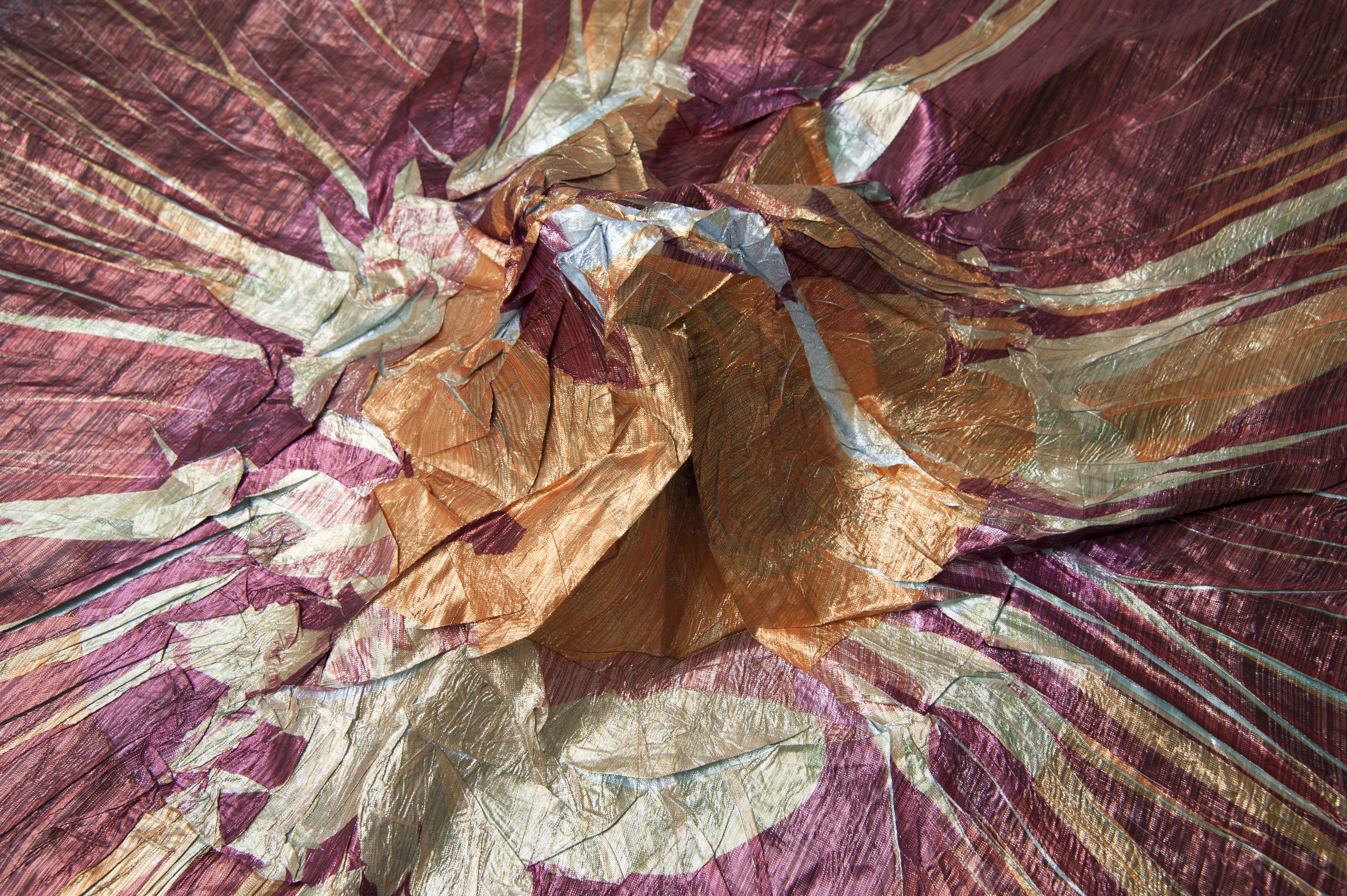The textile work of Junichi Arai is renowned for its complexity and innovation. Often three-dimensional in nature, his fabrics appear as undulating landscapes of puckering, crumpling, puffs, pleats and protruding felted yarns. Many of them glimmer with metallic or translucent sheens, some seem understated in natural creams, browns and blacks, while others reveal woven patterns of fluid lines and swirls. As varied as they appear, however, they all share a simplicity that belies extremely complex manufacturing techniques.
While fashion designers often transform conventional fabrics into something of a higher order, the level of Arai's craftsmanship turns his textiles into works of art. According to textile researcher and writer Loan Oei, Issey Miyake was once so impressed by a Junichi Arai jacquard — a swath woven with a traditional African pattern — that he refused to cut it into a garment. Instead, the designer told Arai that he should start selling his material as is. This is why Arai's work now sits uncut in a number of permanent art collections, including that of the Victoria and Albert in London and the Museum of Modern Art in New York.
Born in 1932 into a family of kimono-fabric weavers living in the textile manufacturing town of Kiryu, Gunma Prefecture, Arai grew up around fabrics. He began experimenting with yarn when the family business, which focused on traditional weaves, began manufacturing silky synthetic material to meet a growing demand in the United States. In the decade of 1958-68, he famously acquired no less than 36 patents for synthetic and metallic textile techniques. Those patents became public property in the 1990s, but not before Arai's imaginative use of the processes made his designs famous.


















With your current subscription plan you can comment on stories. However, before writing your first comment, please create a display name in the Profile section of your subscriber account page.